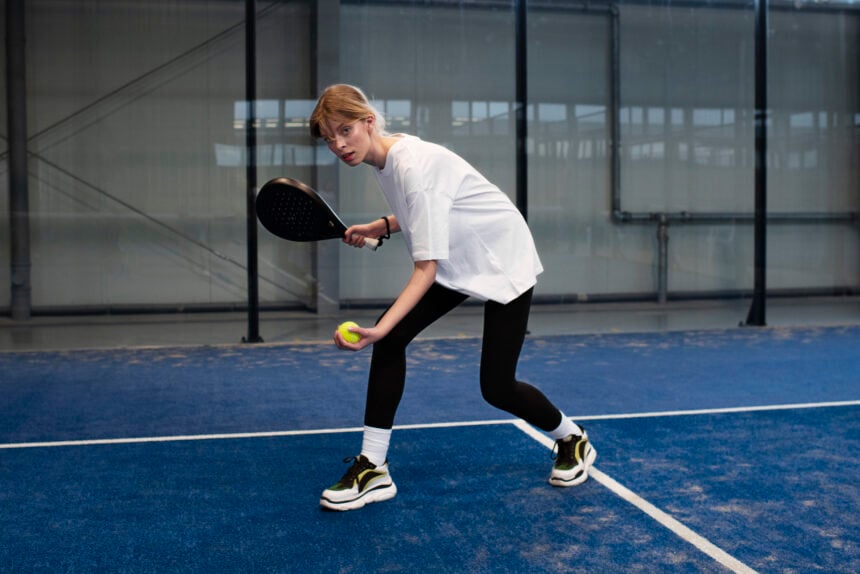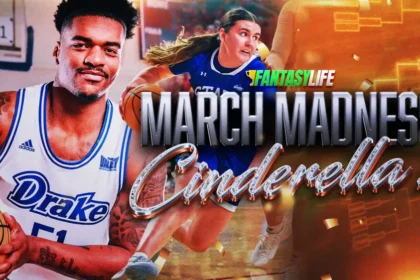A paddle, a plastic ball, and a smaller court — that’s all it takes to hook a neighborhood. Pickleball is the ‘quiet’ sport making a very loud impact on how America plays.
The Rise of ‘Quiet’ Sports — Why Pickleball Fits the Moment
The past few years rewired how we move, meet, and de-stress. We want exercise without the all-day commitment, competition without the drama, and community without the gatekeeping. Enter Pickleball — a fast-learning paddle game that borrows the best bits of tennis, badminton, and ping-pong, then shrinks the footprint so anyone can jump in after work. It’s no accident many locals call it “the friendliest sport.” The gameplay rewards placement over power, rallies happen quickly, and rotating partners turns strangers into regulars.
If you’re wondering why the sport suddenly seems to be everywhere, check our breakdown of how it became America’s fastest-growing sport — the momentum is real, and parks departments are scrambling to keep up.
“Pickleball is tennis’s laid-back cousin — and I’m here for it.” — a TikTok user
What Is Pickleball (and Why It’s So Approachable)?
On paper, it’s simple: a 20-by-44-foot court, a net like tennis but lower, paddles instead of strings, and a perforated ball that travels slower than a tennis ball. In practice, it’s addictive because you feel successful quickly — even total beginners can rally on day one.
The Rules in 90 Seconds
Serve underhand and diagonally, let the ball bounce once on each side after the serve (the “two-bounce rule”), and watch the non-volley zone (the “kitchen”) near the net. Games usually go to 11, win by 2. Want a quick primer to show friends? Share this What is Pickleball? (video) for a visual walkthrough.
Gear, Court Size, and the “Kitchen”
You need a paddle, a few balls, supportive shoes, and you’re off. The smaller court cuts sprinting and pounding on joints, and the kitchen encourages touch shots and dinks over wild smashes. For a tidy overview of the basic rules and court layout, that explainer will have you speaking “third-shot drop” fluently in no time.
“Whole family plays together; zero drama, lots of laughs.” — a Redditor
By the Numbers — Participation, Demographics, Facilities
The growth curve isn’t hype; it’s math. National participation has posted double-digit gains year after year, cutting across age groups and zip codes.
Three Years of Breakneck Growth
Industry trackers show sustained expansion in players and court demand. See the 2024 State of Pickleball report for the big-picture view on participation and infrastructure needs, and the USA Pickleball Annual Growth Report for official tallies, club growth, and tournament activity.
Fitness Boom Context
Put simply: Americans are moving more — and Pickleball is riding that wave. Recent coverage highlights new SFIA data shows participation surging with Pickleball front-and-center as the social, approachable on-ramp back into regular activity.
The Social Side — Why Courts Feel Like Community Hubs
Pickleball courts function like neighborhood plazas. Rotations keep games short, so you meet more people; doubles play lowers the skill barrier; and local groups often run “open play” where winners split to welcome new partners. It’s structured serendipity — a built-in icebreaker that turns a workout into a weekly ritual.
- Inclusive by design: Kids, grandparents, total beginners — all can share the same space.
- Low barrier, high connection: Minimal gear, fast learning, and constant partner mixing make it social by default.
- Shared etiquette: Call your own lines, own your foot faults, and bring an extra ball — small norms keep games friendly.
“Quiet sport, loud growth curve.” — an X user
How to Start Playing This Weekend
You don’t need a membership or a private club. Most towns already have lines painted on tennis or multi-use courts, and many parks run free or cheap intro sessions.
Find a Court, Join a Ladder, Learn Scoring
Search your city’s parks & rec site for open play. Ask a local Facebook group or community center about beginner ladders. Bring two paddles and a pack of balls so you can recruit a friend — or loan gear to the next curious passerby.
Beginner Etiquette (Yes, the Kitchen Matters)
- Call the score before every serve.
- Stay out of the kitchen on volleys; step in only after the ball bounces.
- Aim body-safe: at feet, not faces.
- Rotate off after a game if people are waiting — more players, more fun.
Beyond the U.S. — The Global Spread
Pickleball’s passport is getting stamps. Canada’s public courts are packed; the UK is converting underused sports halls; India’s school programs are seeding youth participation. International tours are spinning up, and rec centers abroad are adding courts as fast as funding allows. A quick scan of global federations and Pickleball pages shows the same pattern: start with a few nets, watch a community appear.
The Next Chapter — Facilities, Noise Rules, and Design Fixes
Rapid growth brings friction: overbooked courts, parking squeeze, and yes, neighborhood noise complaints. Smart cities are responding with:
- Better siting: Courts away from bedroom windows, with landscaping as sound baffles.
- Material choices: Quieter paddles and balls for dense neighborhoods.
- Shared schedules: Balancing open play, lessons, and ladders so all levels find a slot.
- Indoor conversions: Repurposing old racquetball and underused gym space for year-round play.
Culture Watch — When a Sport Becomes a Meme
Pickleball’s charm spills beyond the baselines — into merch, memes, and pets chasing wiffle balls on social feeds. For a lighter look at how the craze jumped the fence, see our culture snapshot of pickleball going viral. When a sport starts showing up on birthday cakes and office Slack channels, you know it’s more than a fad.
Why Pickleball Works for Every Age
- Easy to learn: You’ll rally your first session.
- Flexible pace: Casual dinks or competitive drives — your call.
- Joint-friendly: Smaller court and underhand serves keep wear-and-tear down.
- Built-in community: Show up twice and people remember your name.
Try This: A 4-Week On-Ramp
Week 1: Learn serves, scoring, kitchen rules.
Week 2: Practice third-shot drops and patient dinks.
Week 3: Add soft-to-hard transitions (speed-ups) and reset shots.
Week 4: Join a beginner ladder; rotate partners; play to 11, win by 2.
Coach’s tip: film 60 seconds of play on your phone. Fixing spacing and ready position yields instant wins.
FAQ
What is Pickleball?
Pickleball is a paddle sport on a small court using a perforated ball, blending tactics from tennis, badminton, and table tennis — easy to learn, surprisingly strategic.
Why is Pickleball so popular right now?
Low cost, quick games, and social play make Pickleball the perfect “come-as-you-are” sport. It fits busy schedules and welcomes all ages.
How do I start without feeling lost?
Watch a short rules explainer, join open play at a local park, and learn the kitchen rule early. Many cities host beginner nights for Pickleball first-timers.
Is it good exercise?
Yes. Doubles rallies raise your heart rate with less pounding than full-court tennis. Many players use Pickleball to return to regular activity after years away from sports.
What gear do I need?
A midweight paddle, a few outdoor balls, and supportive court shoes. That’s enough to start playing Pickleball today.









